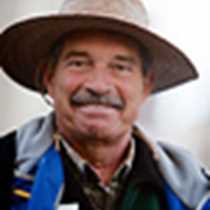Isla Del Carmen and Vicinity, Baja California Sur, México
The Gulf of California is very large, around 800 miles long and 100 miles wide. Sailing along the San Jose Channel during the morning, we saw numerous pods of common dolphins and bottlenose dolphins, as well as three or more humpback whales. We followed these amazing mammals for a good while, until our camera fingers tired of framing images. The humpback whales breached, pec-slapped and tail-lobbed, much to our delight. We could not help but to “ooh!” and “aaah!” until we became hoarse.
Lunch spared us more suffering, but during this repast our ship had approached the large island of El Carmen where we hiked, snorkeled and searched the tide-pools through a warm, sunny afternoon. During our hike into a lovely arroyo, a tiny hummingbird nest was found, securely lashed to a horizontal branch with spider webs. Many of us peeked into this delicate cup and enjoyed the marvelous sight…a newly hatched Costa’s hummingbird, lightly clothed in dark and light downy feathers.
Just above the beach, tucked into a crevice in the eroded volcanic tuff, we found three or four Gulf of California fish-eating bats, a species unique to this area. Evidence in their droppings indicated that they had been feeding not on fish, but on the super-abundant pelagic crab. This planktonic crustacean can be found in huge masses scattered about the gulf.
The Gulf of California is very large, around 800 miles long and 100 miles wide. Sailing along the San Jose Channel during the morning, we saw numerous pods of common dolphins and bottlenose dolphins, as well as three or more humpback whales. We followed these amazing mammals for a good while, until our camera fingers tired of framing images. The humpback whales breached, pec-slapped and tail-lobbed, much to our delight. We could not help but to “ooh!” and “aaah!” until we became hoarse.
Lunch spared us more suffering, but during this repast our ship had approached the large island of El Carmen where we hiked, snorkeled and searched the tide-pools through a warm, sunny afternoon. During our hike into a lovely arroyo, a tiny hummingbird nest was found, securely lashed to a horizontal branch with spider webs. Many of us peeked into this delicate cup and enjoyed the marvelous sight…a newly hatched Costa’s hummingbird, lightly clothed in dark and light downy feathers.
Just above the beach, tucked into a crevice in the eroded volcanic tuff, we found three or four Gulf of California fish-eating bats, a species unique to this area. Evidence in their droppings indicated that they had been feeding not on fish, but on the super-abundant pelagic crab. This planktonic crustacean can be found in huge masses scattered about the gulf.




